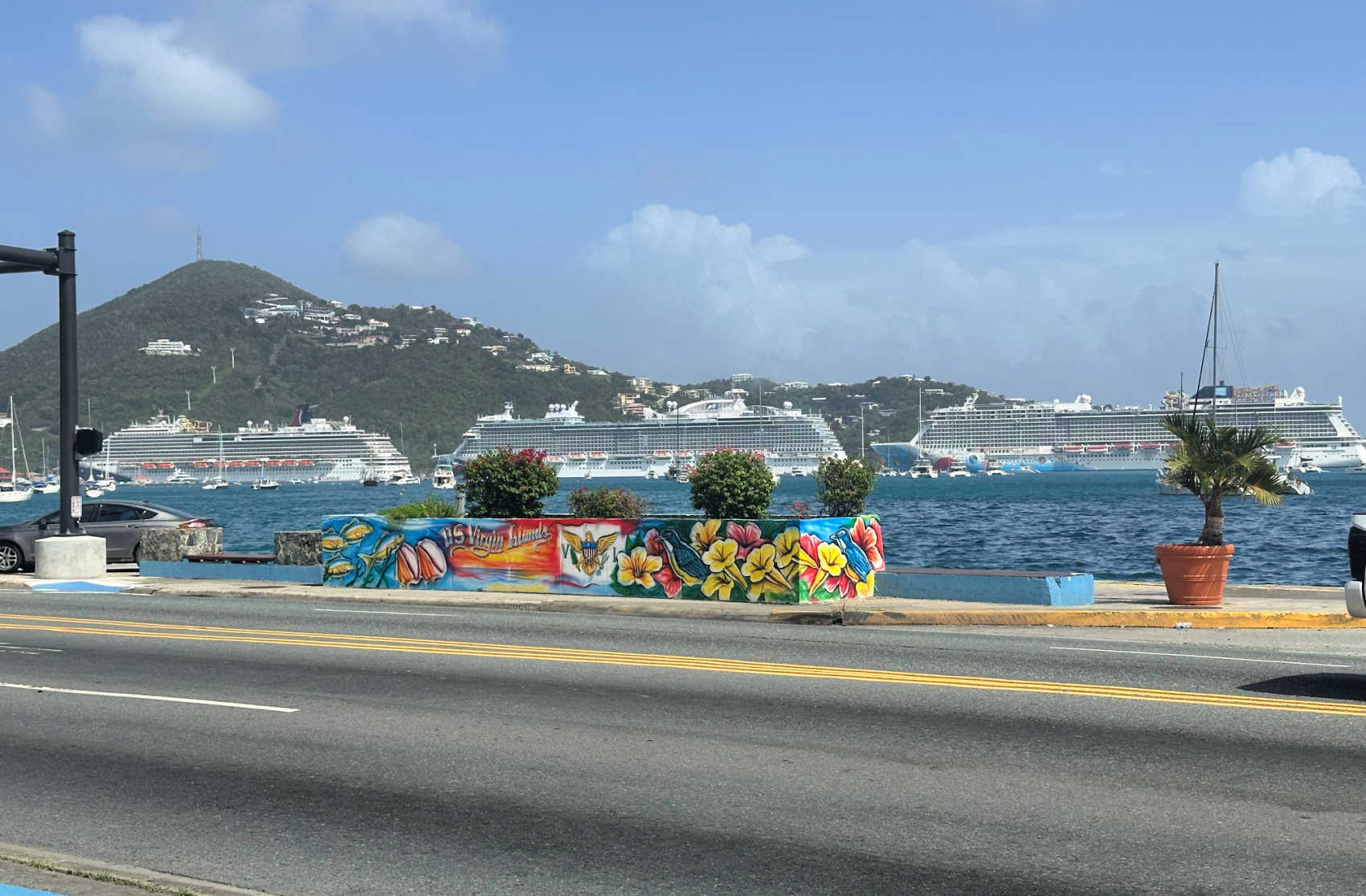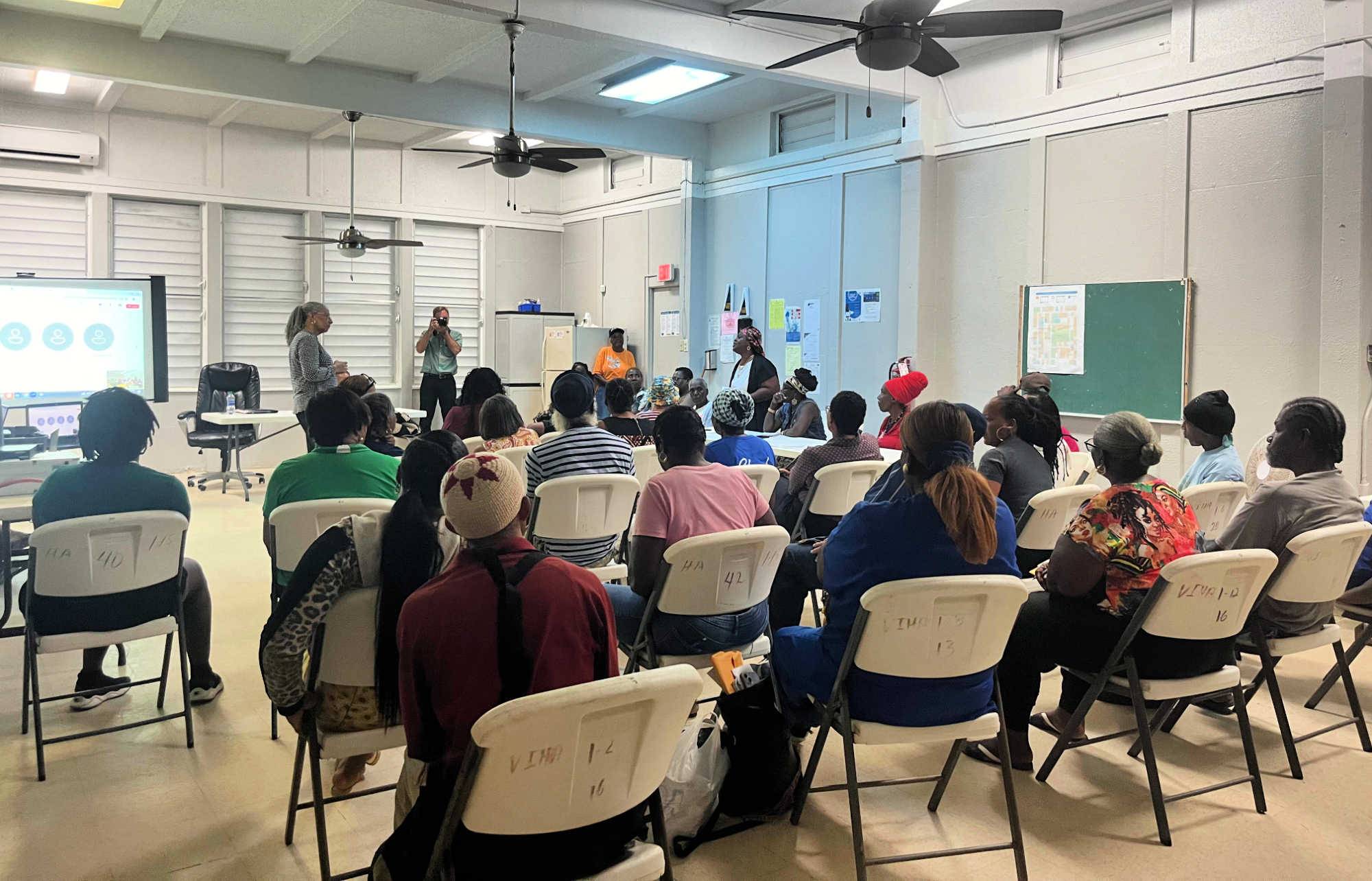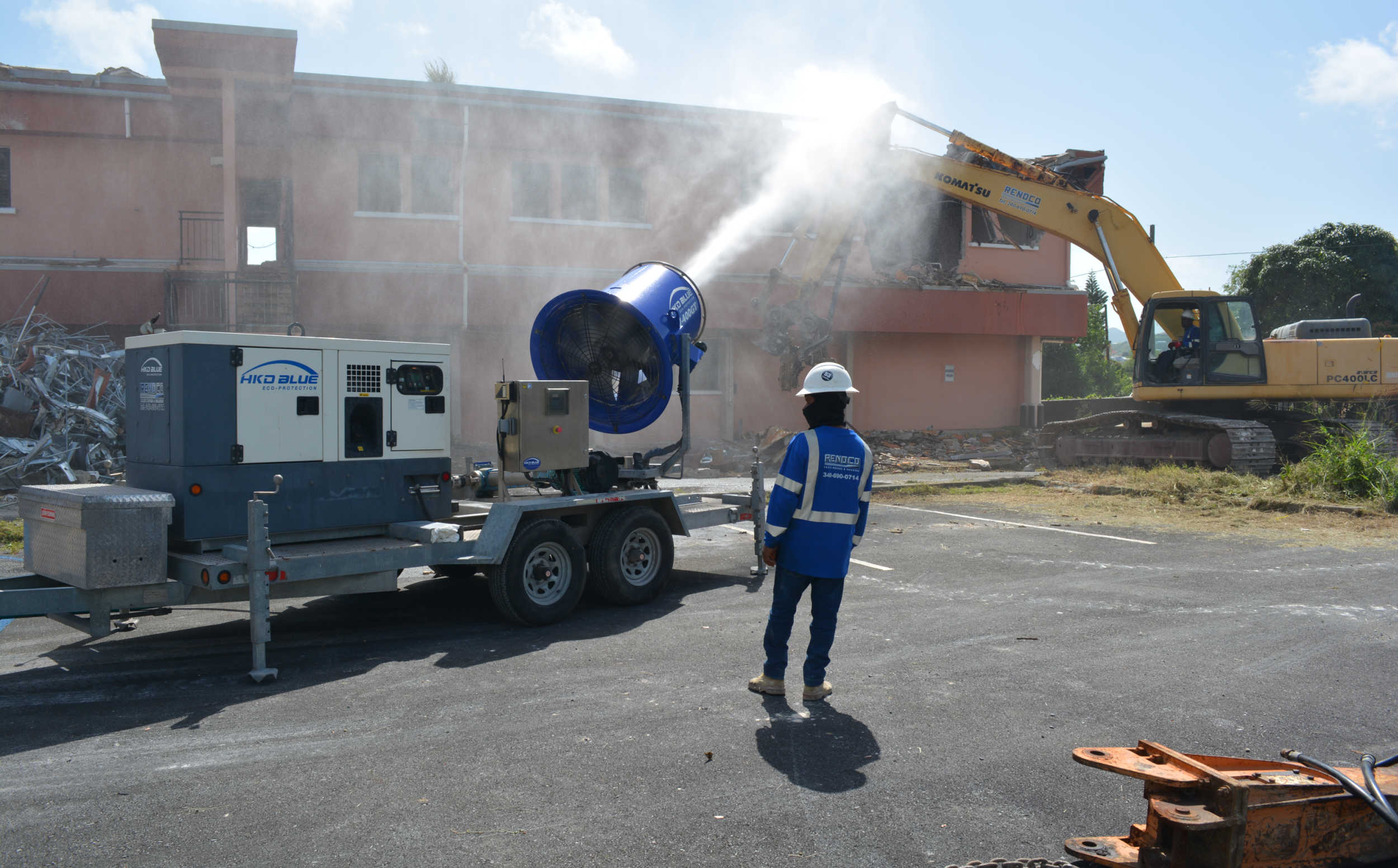Development
PFA Eases Bond Requirement for Smaller Construction Projects

During a special meeting on Monday, the board of the Public Finance Authority (PFA) approved a decision to increase the bond threshold for construction projects. This change is designed to alleviate the financial requirements for smaller contractors engaging with the PFA on various projects.
Historically, construction projects exceeding $250,000 required contractors to obtain bonds—a financial safeguard that ensures contractors fulfill their contractual obligations in terms of quality, timelines, and terms.
The shift in the PFA’s focus from predominantly procuring professional services to incorporating procurement construction projects has led to this adjustment. This shift is partly due to integrating the Office of Disaster Recovery into the PFA’s framework. Lorelei Farrington, staff counsel, highlighted the agency’s involvement in the EnVIsion Tomorrow program, which focuses on rebuilding and rehabilitating homes damaged by hurricanes. She noted that smaller contractors, who are often pivotal to these projects typically under $350,000, struggle to secure bonding due to stringent evaluations of their financial health by bonding companies.
Farrington proposed an amendment to the procurement procedure manual to exclude projects under $350,000 from the bonding requirement. This adjustment aims to streamline operations and accommodate the financial realities of smaller contractors who might have negative working capital.
Addressing potential risks associated with non-bonded projects, Adrienne Williams-Octalien, Director of the Office of Disaster Recovery, outlined measures such as enhanced PFA oversight through more frequent site visits and reviews, and bolstered construction management. Williams-Octalien emphasized that increasing the bond threshold allows for greater flexibility in managing project complexities and expanding the contractor base in the Virgin Islands.
She also acknowledged the economic challenges facing the construction sector, with rising costs necessitating an adjusted approach to project financing. The PFA plans to support these adjustments through training and additional support, ensuring project completion and mitigating potential risks.
Development
Bill to Fund Pre-Construction of Charlotte Amalie Dredging Advances

Bill No. 35-0262, which aims to allocate $1.4 million for pre-construction costs in preparation for the dredging of the Charlotte Amalie Harbor, successfully advanced on Thursday in the Committee on Budget, Appropriations and Finance. This progress follows an earlier delay caused by miscommunication that led to its removal from the agenda of its initially scheduled hearing.
The governor’s financial team, who did not attend the original meeting, later informed committee chair Senator Donna Frett-Gregory that they mistakenly believed the bill would not be presented. This confusion arose because another agenda item requiring their presence had also been removed. Although officials from the Port Authority were present, Senator Frett-Gregory stated she was “not inclined to proceed…absent of the representatives of the government that have to speak to whether the $1,434,950 is in fact available to be expended from the Community Facilities Trust Fund.”
At the time, the delay frustrated Carlton Dowe, executive director of the V.I. Port Authority. However, the VIPA team can now be relieved as the measure moved forward to the Committee on Rules and Judiciary following assurances from V.I. Public Finance Authority Director Nathan Simmonds.
“We support the appropriation of the $1.4 million for the soft costs,” Mr. Simmonds confirmed. Although only $1.1 million is currently available for appropriation in the fund, the PFA director explained that the fund’s cash balance exceeds $15 million. “We believe that there are substantial appropriations that will not be expended in the remainder of this fiscal year.” Additionally, the PFA expects an additional $3.4 million from the rum tax cover to be contributed to the fund. “Clearly, we can fund this appropriation,” he assured.
The $1.4 million allocation is intended to cover permits and other preliminary actions necessary for the commencement of the dredging work in the Charlotte Amalie Harbor. Authorities have emphasized that dredging the harbor is crucial to maintaining its capacity and accommodating larger classes of cruise ships. The project is seen as vital for ensuring a competitive edge over other regional tourism destinations.
Development
New Grant Sparks Hope for Homeownership in Williams Delight After Decades of Waiting

Senator Marise James announced a new homeownership grant program during a community meeting at the Williams Delight Center on Thursday, May 30, 2024, offering residents a $15,000 grant towards purchasing a home in the community.
This initiative stems from a town hall meeting last year where residents voiced their long-standing challenges in achieving homeownership. After attending another meeting organized by Williams Delight Residents Council President Mariesha Maynard, Senator James proposed the grant program to Governor Albert Bryan Jr. Funded primarily by the American Rescue Plan Act, the program was developed in collaboration with the St. Croix Foundation and the V.I. Housing Authority (VIHA).
While the grant provides substantial financial aid, applicants must still meet VIHA requirements, including completing a home buyers’ education course. To enhance accessibility, an in-person option of the virtual course is being developed.
Senator James emphasized the importance of homeownership for community transformation, stating, “It’s important that all of us get a piece of that dirt, that rock, a little piece of that island. It’s a beautiful island but we all need to have a little piece of it.” The grant aims to help residents build generational wealth and close the economic gap in the territory. With a two-bedroom unit costing only $22,000, the grant reduces the required personal funds to just $7,000 for prospective homeowners.
Reactions among residents varied. While some welcomed the grant, others were skeptical. A local homeowner expressed concerns about the community being used for political gain and suggested a payment plan for existing homeowners struggling with mortgage payments. In response, Senator James acknowledged the challenge of high mortgage payments as “the reality of capitalism” and referred the payment plan suggestion to VIHA for consideration.
Ms. Maynard highlighted issues with sub-standard repairs on some homes, noting that financially constrained residents often had to hire the cheapest contractors. Senator James assured that the grant process would include selecting reliable contractors and ensuring quality inspections to guarantee residents receive full value for the $15,000 grant.
Ms. Maynard closed the meeting by encouraging financial awareness among residents while celebrating the new grant as a significant milestone in their long journey to homeownership. “Williams Delight is my second home—I’ve been running around here from how long with my aunt—but at the end of the day I didn’t do it for me, I do this for ayo,” she said.
Development
Demolition of Charles Harwood Memorial Complex Main Campus Begins

The V.I. Department of Health has initiated the demolition of the Charles Harwood Memorial Complex’s main campus to pave the way for a new, state-of-the-art public health facility on St. Croix.
“We appreciate the community’s trust as we undertake the construction of this crucial infrastructure for the Virgin Islands,” stated Reuben Molloy, assistant commissioner at the Department of Health, from the demolition site. “Our goal is to reduce health risks, enhance access to quality health care services, and enforce health standards.”
Lemartec USVI, the company contracted for the demolition, began dismantling the eastern-most section of the complex on Thursday.
“It’s an exciting day here at the Charles Harwood Memorial Complex,” said Casey McIntyre, senior project manager for Lemartec USVI. “We’ve completed the initial project phases and are now proceeding with the main building’s demolition, starting with the eastern wing. We’ve cleared the building of all contents in preparation for the demolition.”
The demolition will not involve blasting, and several mitigation measures have been put in place, including privacy and dust screens, a water dust suppression machine, and wind direction monitoring. Lemartec USVI has also developed a Storm Water Pollution Prevention Plan, utilizing best management practices such as silt fencing, storm drain sediment covers, and track-out prevention, and will monitor weather conditions closely.
“We are diligently ensuring a safe site as we proceed with the demolition,” McIntyre added.
The Department of Health has taken steps to minimize disruptions to school activities, business operations, and traffic in the area. In August, Lemartec USVI completed the demolition of the Annex Building, formerly the island’s hospital. In May, the Old Club House and two other buildings at the northeast corner of the campus were also demolished.
The demolition of the complex’s main campus, the final phase, is expected to be completed by October 2024.
Health Commissioner Justa Encarnacion emphasized the department’s commitment to rebuilding the territory’s public health infrastructure. “This progress is due to a dedicated project management team working closely with key agencies and our vendors to keep our disaster recovery projects on track,” Encarnacion said. “We are grateful to the St. Croix community, especially the neighboring Richmond residents, the Juanita Gardine School family, and nearby businesses for their patience and understanding throughout this process.”
“This is part of Governor Albert Bryan Jr’s ‘Rebuild USVI’ plan to expedite the disaster recovery effort,” she added.
Representatives from the VI Office of Disaster Recovery, VI Department of Public Works, VITEMA, Witt O’Brien, The Strategy Group, and FLAD Architect joined the Department of Health on Thursday.
The Charles Harwood Memorial Complex, severely damaged in the 2017 hurricanes, was one of the first projects deemed replaceable by FEMA. The agency awarded the territory $291 million for the complex’s reconstruction, which will adhere to current national construction codes and standards. The Department of Health spent several months securing local approvals, including a historic preservation review.
Upon reconstruction, the facility will be renamed in honor of St. Croix physician and former VI Delegate to Congress, Dr. Donna Christian Christensen.
-

 Education11 months ago
Education11 months agoCTE Board Enthusiastic About New Curriculum Standards, Yet Anxious Over Apprenticeship Support
-

 Crime11 months ago
Crime11 months agoRegistered Sex Offender Detained for Illegal Firearm Possession During Annual Surveillance Drive
-

 Development3 months ago
Development3 months agoCosts Surge as Donoe Estates Housing Project Resumes with New Contractor
-

 Crime9 months ago
Crime9 months agoSt. John’s Westin Resort Scene of Armed Robbery, Prompting Heightened Police Vigilance
-

 Videos2 years ago
Videos2 years ago2022 Gubernatorial Election: Voters Speak Out
-

 Crime11 months ago
Crime11 months agoUnraveling the Home Invasion in St. John: Suspect Held on $100,000 Bail
-

 Videos2 years ago
Videos2 years agoGubernatorial Teams Celebrate St. Croix’s Bull & Bread Day
-

 Videos2 years ago
Videos2 years agoBehind the Lens: Meet Kareem of Funtime Jetski & Boat Charters





